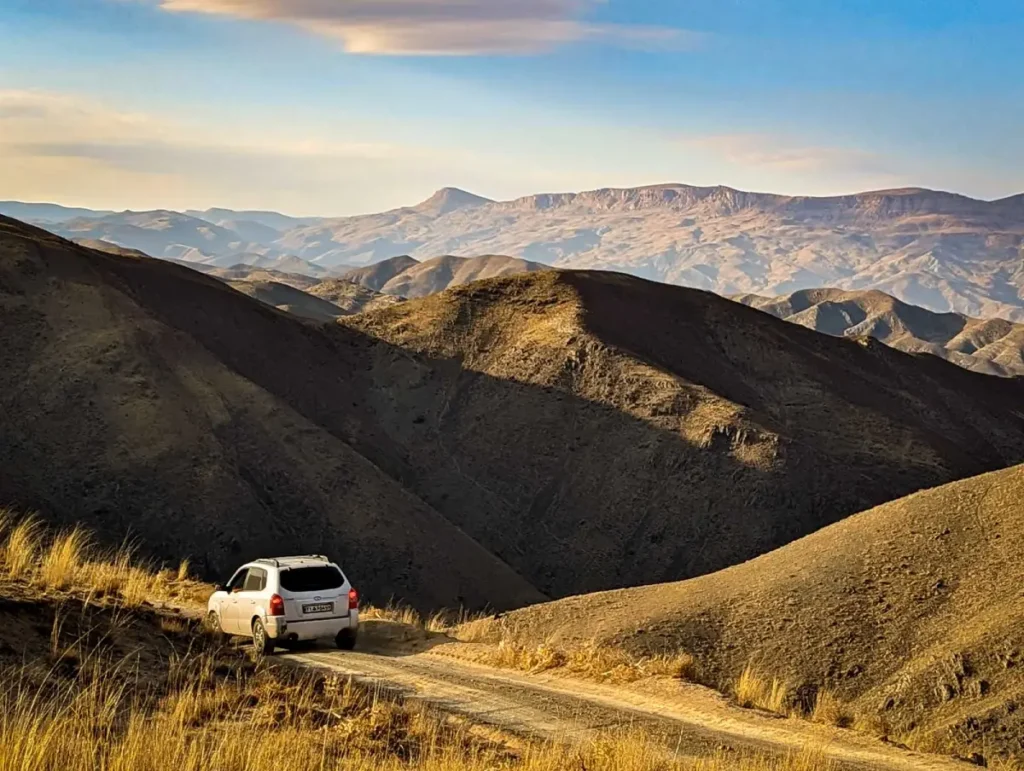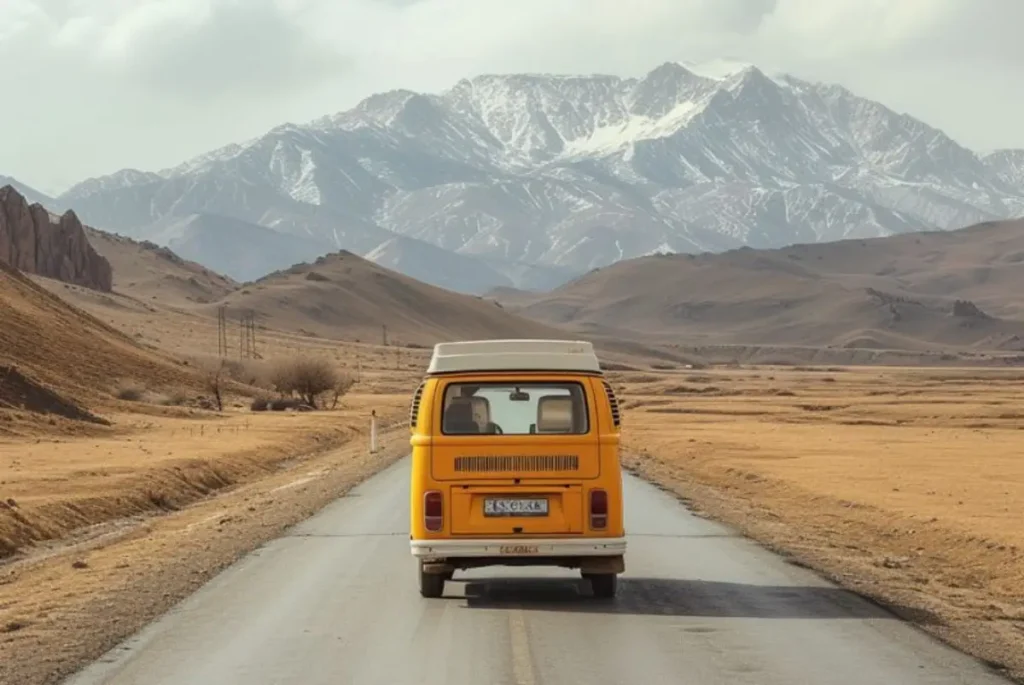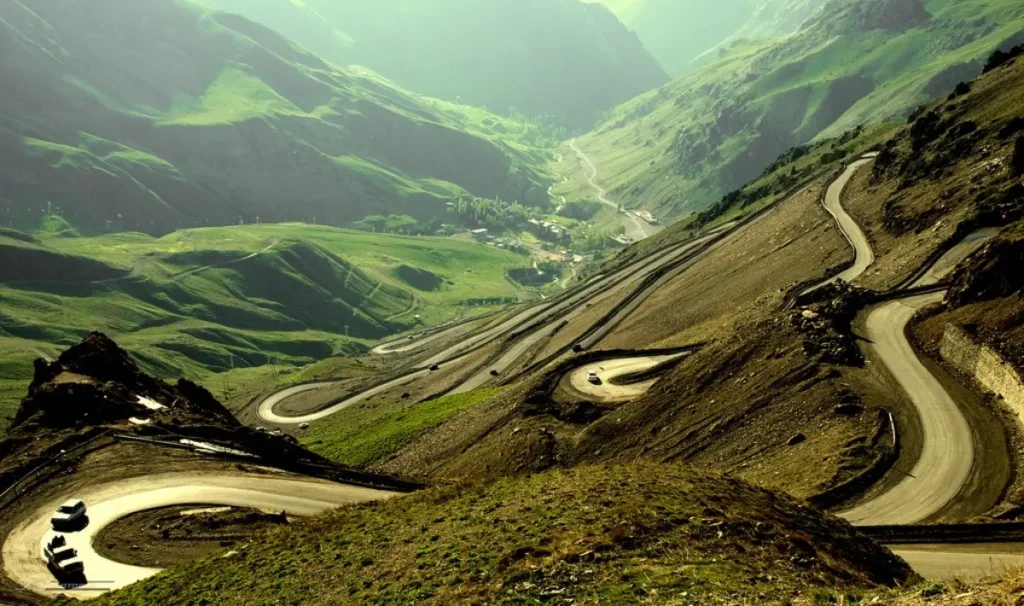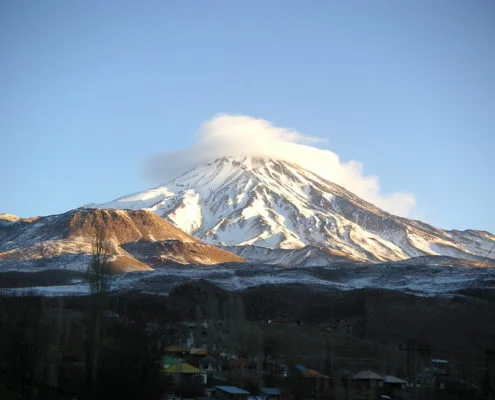If you want to enter Iran with your own car, you must meet specific conditions. According to Iranian customs regulations, temporary entry permits are only issued to those who reside outside Iran and have lived in another country for at least six consecutive months.
If you meet these conditions and have a valid Carnet de Passage (a document for international vehicle travel), you can use your car in Iran without the need to pay a deposit or submit additional declarations to customs. The permit is valid for up to three months, depending on your visa duration and the carnet’s validity. During this time, you can enter and exit Iran multiple times through authorized border points.
Carnet de Passage Details
The Carnet de Passage is available in booklets of 5, 10, 15, or 25 pages. Each page allows one entry and exit. For example, if you have a 25-page carnet, you can enter Iran 25 times. The maximum stay per entry is three months or the duration of your visa. However, Iranian customs officials determine the allowed stay upon arrival.

How to Temporarily Import Your Car
Foreign tourists and Iranians residing abroad can temporarily import their cars by obtaining a valid Carnet de Passage. The document must match the vehicle owner’s name and include valid vehicle details. The carnet must be issued by an authorized automobile association in your home country and specifically be valid for Iran. It must not have any restrictions against Iran and should not be expired.
The temporary entry permit is valid for three months. If you wish to extend your stay, you must obtain prior approval from Iranian customs.
If your vehicle stays in Iran for more than ten days, you must obtain a temporary transit license plate. To do this, first, get a customs clearance document from the border entry point. Then, visit the designated traffic police office mentioned in your clearance document to receive your temporary plate.
Border Crossings for Entering Iran with a Vehicle
Iran has multiple land and sea borders for vehicle entry:
- Turkey: Bazargan (northwest Iran)
- Azerbaijan: Julfa, Astara, Poldasht, Savar, Beileh
- Armenia: Norduz
- Turkmenistan: Bajgiran (Khorasan Shomali)
- Afghanistan: Milak, Dogharoon (southeast Iran)
- Pakistan: Mirjaveh
- Iraq: Shalamcheh, Mehran, Bashmaq
- Southern sea borders: Persian Gulf and Oman Sea ports
Vehicle Entry Restrictions
- Motorcycles over 250cc and those made in the U.S. are not allowed.
- Luxury and high-end vehicles such as Porsche, Lamborghini, Ferrari, Hummer, Maserati, Bugatti, gold-plated cars, and any U.S.-made cars cannot enter Iran.
- Since 2019, the restriction on temporary entry of tourist vehicles worth over $40,000 and those with engines larger than 2500cc has been lifted.

Solutions for Entry Challenges
In the past, the requirement for a temporary transit plate caused delays and confusion for travelers. Many tourists were frustrated by long processing times at border crossings. Fortunately, after extensive discussions between Iran’s Touring & Automobile Club and government officials, new regulations were introduced. Since April 2024, vehicles with international plates can enter Iran without needing a temporary transit plate. Only vehicles without international plates will be required to obtain one upon entry.
This improvement aligns with Iran’s goal to boost tourism by making vehicle entry easier. It follows international road travel agreements and helps tourists enjoy a smoother journey.
Insurance for Driving in Iran
Car insurance is mandatory for all vehicles entering Iran. There are three types of insurance:
- Comprehensive coverage: Protects against damages to your car.
- Third-party liability: Covers damages to others’ property or injuries.
- Personal accident insurance: Covers injuries to you and your passengers.
Before traveling, check with your insurance provider to confirm whether your policy covers Iran. If not, you can purchase temporary insurance from Iranian companies at the border.
Traffic Rules and Road Safety in Iran
Iranian roads vary in condition, but major highways are well-maintained and have English and Persian road signs. Speed limits are typically:
- 50–80 km/h in cities
- 80–110 km/h outside cities
Driving in Iran requires patience, especially in major cities like Tehran, Esfahan, Shiraz, and Mashhad, where traffic can be heavy. Police checkpoints and traffic cameras are common. If stopped by traffic police, remain calm and present your vehicle documents. Drunk driving and drug use are strictly prohibited.
Emergency numbers:
- Police: 110
- Fire: 125
- Ambulance: 115

Fuel Availability and Repair Shops
Iran has an extensive network of gas stations, but it is advisable to keep a jerry can filled for remote areas. Although fuel is cheap, Iranians use a fuel card system. Tourists can still buy fuel without a card but at a slightly higher price.
Repair shops are available in cities and towns. Iranian mechanics are skilled, and spare parts are widely accessible. Locals are hospitable and willing to help travelers facing car trouble.
Scenic Routes and Must-Visit Destinations
One of the advantages of traveling by car in Iran is experiencing its beautiful landscapes. If you enter Iran through Azerbaijan, don’t miss the breathtaking Heyran Road near Astara, which passes through lush green valleys with misty mountain views.
Iran is also home to many historical sites and UNESCO World Heritage locations. Some must-visit destinations include:
- Persepolis in Shiraz – The ancient Persian capital.
- Naqsh-e Jahan Square in Isfahan – A masterpiece of Islamic architecture.
- Sa’ad Abad Palace in Tehran – A stunning royal residence surrounded by nature.
Accommodations and Banking in Iran
Motels and roadside restaurants are common. Truck drivers often know the best places to eat and rest. Iran’s banking system is not connected to international banking, so credit cards are not accepted. Carry enough cash or use Visit Our Iran’s Debit Card Services, a prepaid debit card for foreign travelers.
Why Travel to Iran with Your Own Car?
Driving through Iran offers several advantages:
- Lower travel costs – Avoid expensive domestic transportation.
- Flexible travel plans – Explore at your own pace.
- Access to more destinations – Reach remote attractions easily.
- Convenient border crossings – With the updated policies, vehicle entry is now faster and more efficient.
At Visit Our Iran, we assist international travelers with all necessary paperwork, carnet issuance, and customs procedures. If you face any issues, our team can help ensure a hassle-free experience, so you can focus on enjoying your journey through Iran.


